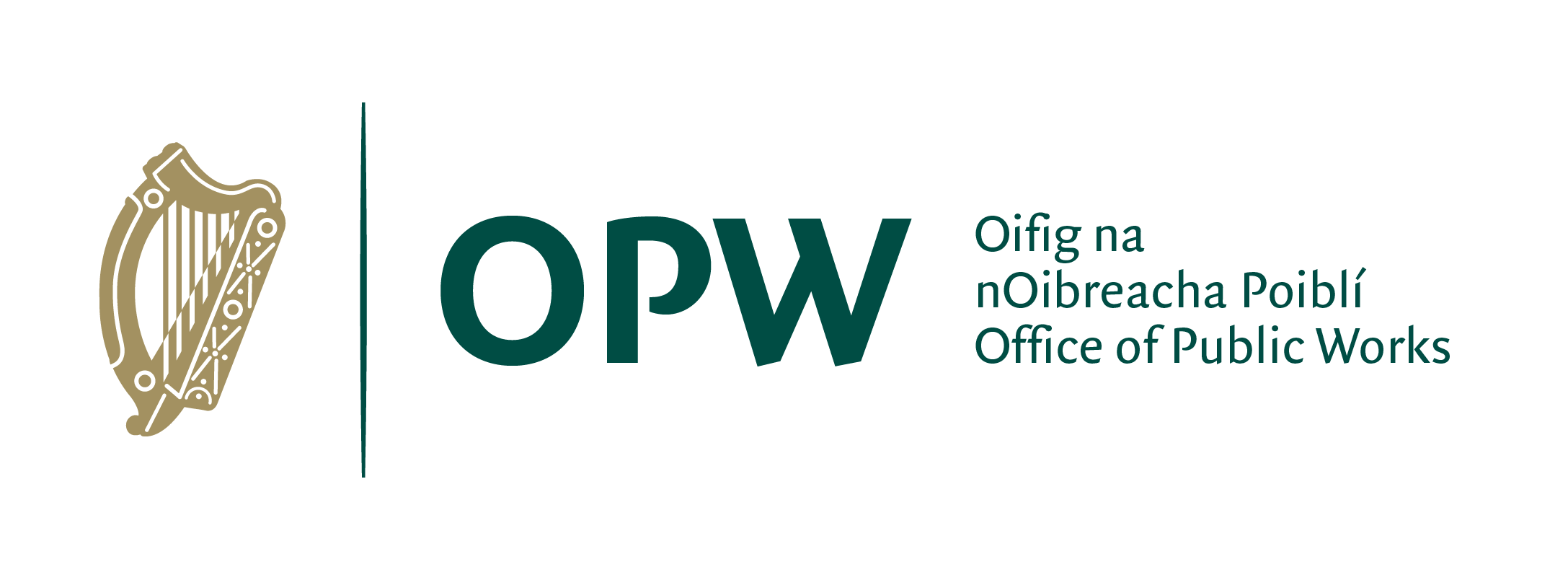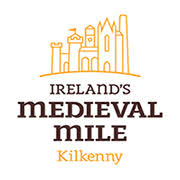Quarterly, first, Or, a chief indented azure; second Gules, three covered cups or; third, Argent, a lion rampant gules, on a chief of the last swan close of the first between two annulets or: fourth Ermine, a saltire gules.
Above is the full heraldic description of the Butler family’s coat of arms and it is slightly confusing a first glance however we shall go through the coat of arms in detail and explain what each symbols means and its importance to the family.
Or, Chief Indented azure.
This is the oldest part of the family’s coat of arms or simply means gold and azure is blue. This is the simplest part of the shield and is located in the top left quarter, looking very much like a wavy line. This was given to Theobald Walter by Prince John as his personal emblem. Most likely it was inherited from Theobald Walter’s maternal Uncle, Ranulf de Glanville. This can be seen on a charter granted by Theobald Walter to the town of Gowran dated 1185 and was recorded by Carte a later family biographer. Many branches of the Butler family use the same device with subtle differences.
Gules, three cover cups.
This is located in the top right quarter and is three gold covered cups on a (Gules) red background.
The origins on this are obscure, the cups or cup, may have been a badge of the Chief Butler. Theobald Walter’s seal was a “a very fair seal of green wax, the impression on the shield is a chief indented… and on either side a cup to denote the office of butler” (Carte p. 18). According to Dr. William Roberts, Ulster King of Arms, 1643-55, A Coat of Gules, three cover cups or, was granted to Theobald Walter by King Henry II, 1154-89, as an Augmentation Coat to commemorate services performed by his ancestors as cup bearers to former kings, the cup being held to be an emblem of the cup bearer rather than butler. As a heraldic device this was used by many families whose surname was Butler, English, Continental and Irish, most if not all deriving their name from an office of butler held in the household of a monarch or great magnate. Examples of the three cups can be found on the grave of Piers Rua Butler, 8th Earl of Ormond, buried in St. Canice’s Cathedral and in glass in the window of the Hall of Gray’s Inn in London dating from the time of Thomas Butler, 10th Earl of Ormond, in the 16th Century, and also in the widow of the Chinese Room of Kilkenny Castle today.
Argent, a lion rampant gules, on a chief of the last swan close of the first between two annulets.
This is located in the bottom left quarter of the shield and is a red (Gules) lion upright with a white swan and two finger rings (Annulets) on a silver(Argent) background.
This is a bit more complex in origin. The lion rampant is said to be the Arms of the Lordship of Karryk, Carrick an Suir today. The Lordship of Karryk mac Griffyn was granted in 1315 to Edmund the 6th Chief Butler of Ireland and father to James Butler, the 1st Earl of Ormond. The oldest surviving example of a lion rampant can be found in decorative plasterwork in Ormond Castle today dating from the 16th Century. It also can be seen in the fine portrait of Thomas Butler ,10th Earl, located in Kilkenny Castle today, albeit reversed in position. The swan and the two annulets remain unexplained in most heraldic studies; my own guess is that they were inherited into the Butler family when they married into the de Bohun family in the 14th Century. The de Bohun family had an illustrious history having arrived in England with William of Normandy. Eleanor de Bohun was the granddaughter of King Edward I and married James Butler 1st Earl of Ormond. The De Bohun line had become extinct by the late 14th Century and their family coat arms included a swan with three annulets. It is probable that because of this noble marriage into royalty that the Butler incorporated them into their own coat of arms to commemorated this event. However, this is only guesswork on my part!
Ermine, a saltire gules.
Ermine is a prised fur and is still used in formal robes today, usually white in colour. A saltire is a cross used most famously in the flag of Scotland ad Gules again means red. So a red cross on a white background. This located in the bottom right quarter of the shield
The origin on this are rather more straight forward. This is the flag or saltire of the Desmond FitzGerald family. Despite being hated enemies the FitzGerald were also married into the Butler family on many occasions, no better feud than between cousins. The Desmond saltire may commemorate an ancestor of this family, Katherine, daughter of Gerald the poet; Earl of Desmond, who was mistress to James Butler 3rd Earl of Ormond and mother to two of his sons and one daughter. One of his son became Baron of Cahir. The oldest surviving example of this quarter is from the 16th century portrait of Thomas Butler 10th Earl. It is also to be found on the magnificent tomb of John Butler 2nd Marquess (second creation 1825), 1808 -54, located in St. Canice’s Cathedral today.
Peter Kenny



